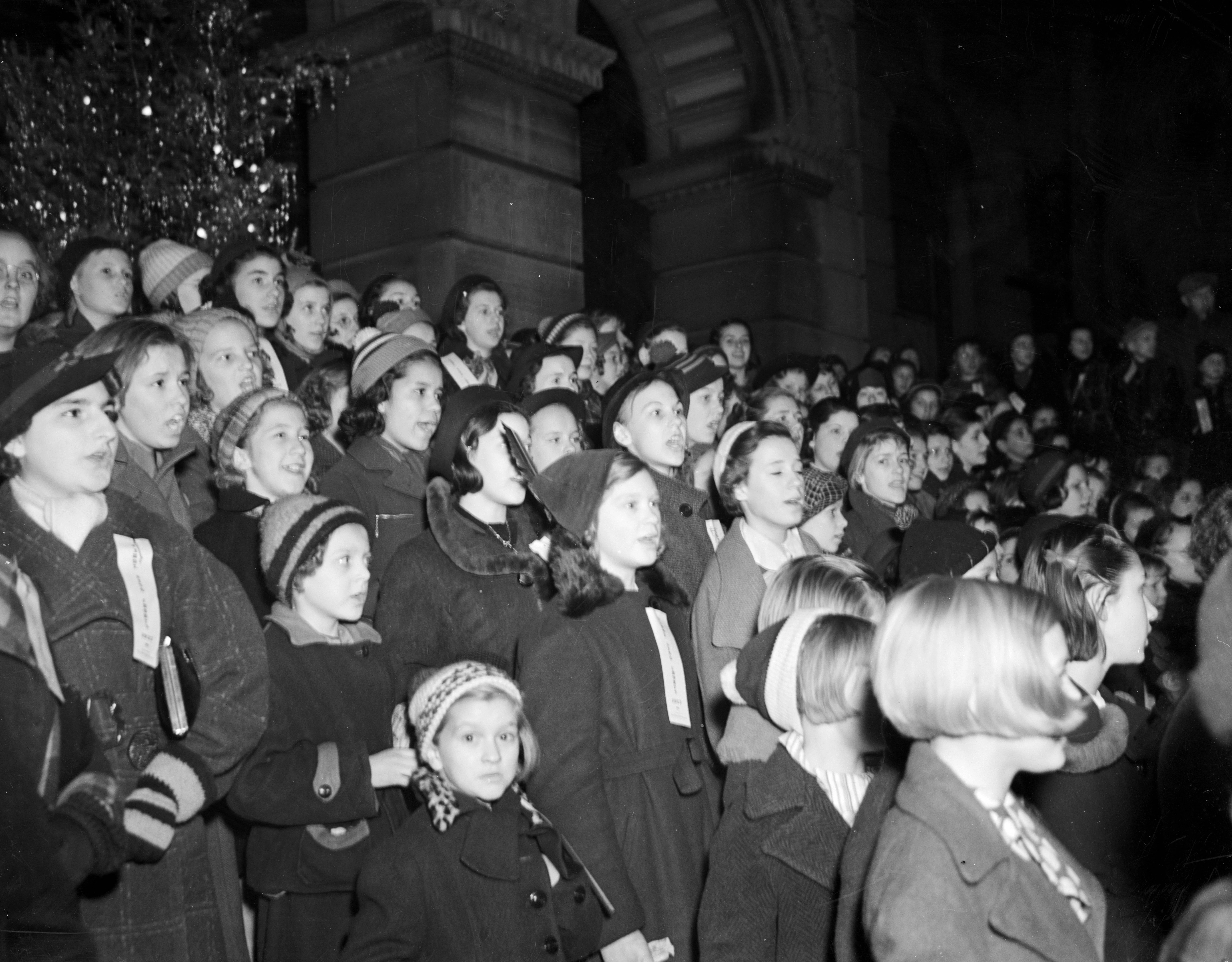The COVID-19 pandemic has led to the cancellation of countless holiday gatherings, school pageants, office parties, concerts, dinner dates, travel plans, worship services and just about everything else that makes this time of year so special.
Charles Dickens’ Ghost of Christmas Present is having a tough time of it here in 2020, that’s for sure.
So perhaps it would do us some good to accompany a spectral sibling, the Ghost of Christmas Past, to an era before social distancing, stay-at-home orders, “masking up,” and other such matters of life and death.
Indeed, what better way transport oneself back in time—figuratively speaking, of course—than through photographs? And when it comes to local holiday events and traditions dating to the 1930s and 1940s, we’re in luck. Why? Because the not-for-profit McLean County Museum of History has overseen the digitization of nearly 80,000 Pantagraph photo negatives from those two tumultuous “Greatest Generation” decades.
And from those 80,000 images there are many hundreds highlighting the holiday season, most of which are sure to boost one’s waning spirits.
Even better, these digitized Pantagraph Negative Collection photos can be freely accessed and searched by the public at large through the Secretary of State’s Illinois Digital Archives (IDA) website—www.idaillinois.org.
What will one find on the IDA site when it comes to Pantagraph holiday photos? Well, there are those that vividly capture downtown Bloomington’s retail golden age when there were five department stores within one block of the courthouse (now museum) square. There are also photographs featuring the City of Bloomington’s once-annual Christmas Jubilee program for schoolchildren, and the long-running local adaptation of “A Christmas Carol” staged at the Consistory (now the Bloomington Center for Performing Arts). Other subjects include decorations, dances, Christmas trees, presents; Santa, churchgoers and charitable activities, such as food baskets for needy families.
From 1927 to the late 1930s, one of the warmer local holiday traditions was the annual “Community Christmas Carol Sing.” This event entailed hundreds—and on several occasions more than a thousand—local residents gathering at the courthouse steps to sing hymns, carols and secular holiday songs befitting the season.
The Pantagraph Negative Collection on the IDA site includes a number of images from this event (see accompanying photograph for a representative example.)
The easiest way to search for these Pantagraph images is through the McLean County Museum of History’s own website—www.mchistory.org. Once there, go to the “Research” tab and click on “Resources.” From there, click on “Pantagraph Negative Collection.” That’s all there is to it. That will take you to straight to the Pantagraph negatives, which are divided into three collections by date range: 1930-39; 1940-45; and 1946-1949.
More than a decade ago, The Pantagraph donated its vast collection of photo negatives to the McLean County Museum of History, knowing the nationally accredited institution was better equipped to ensure the long-term preservation of these historically priceless images. The negatives span the early 1930s to the year 2000, when the newspaper switched from analog film to digital photography.
As a not-for-profit institution, the museum has relied on state and federal grants to digitize the earliest years of the collection. Additional grants and financial support will enable us to digitize and make available online even more Pantagraph negatives.
The first Community Christmas Carol Sing was held on Christmas Eve 1927, with some 2,000 folks gathered on the east side of the square. Scenes depicting the Nativity were projected onto a temporary screen. The words of the hymns and carols were likewise projected—in sing-along fashion—onto this board.
The third annual “Sing,” held Christmas Eve 1929, began with the “Triple Bass Quartet” playing from the courthouse roof!
On Dec. 23, 1930, the day before the fourth annual community sing, members of The Pantagraph’s “Christmas Carol Chorus” boarded flatbed trucks to motor through the Twin Cities, caroling along the way to bring holiday cheer to those unable to join them for the next day’s big event.
Six years later, Dec. 23, 1936, the tenth annual “Sing” drew an estimated 1,500 area residents (including 400 seventh and eighth graders) to the west side of the courthouse. The event began with a performance by the George Marton-directed Bloomington Municipal Band in the Courthouse rotunda, with the music piped to outside amplifiers so downtown shoppers could enjoy the music. The array of performers included the saxophone quartet of Raymond Uhrie, Carl Meyers, Harold Powell and Jack Higgins.
For the 12th annual event, Dec. 23, 1938, the “first slush of winter underfoot” made for a smaller-than-expected turnout, though those in attendance did not lack for Christmas cheer. The program included “Jingle Bells,” “O Little Town of Bethlehem,” “Silent Night” and “It came Upon the Midnight Clear.” The evening ended with “O Come All Ye Faithful.”
“The Community Christmas Carol Sing is open to everyone in this and the surrounding communities,” declared The Pantagraph prior to the 1937 event. “Everybody is invited to join the holiday crowds, to pause a moment in their shopping or business, to forget what may seem to be a care or a burden and join in the singing of the songs which have come down through the ages as best expressing the joy of the Nativity.”
Who’s for bringing this tradition back for the 2021 holiday season? Imagine singing “Santa Claus Is Coming to Town” or “Silent Night” with hundreds or more fellow citizens on the museum square in historic downtown Bloomington. How lovely that would be, especially after the trials and tribulations of 2020.

